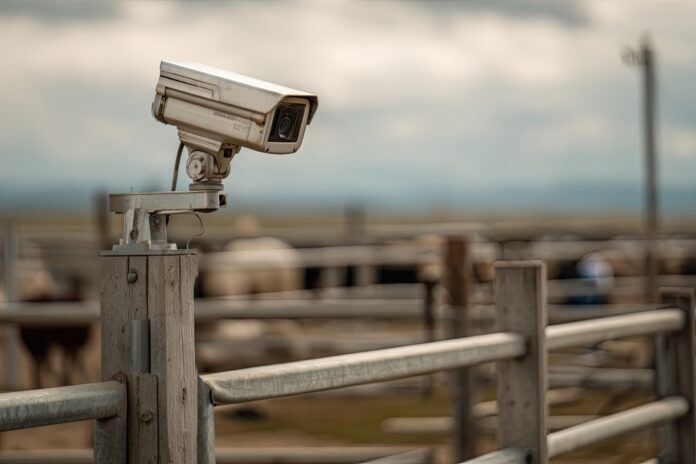Unveiling the Surveillance State: Big Ag’s Secret War on Animal Rights Activists
Farm industry spied on animal rights activists—a phrase that sounds like a movie plot, but it’s the stark reality of recent decades in the United States. Agribusiness, with its vast resources, not only tracked and infiltrated activist networks but also systematically lobbied federal agencies to treat peaceful protests as a matter of national security. Most importantly, what began as an industry’s effort to shield itself from reputational harm escalated into a chilling influence over law enforcement, with the FBI reclassifying activism as bioterrorism in certain instances.
The Rise of Undercover Investigations and Industry Countermeasures
Throughout the 1990s and 2000s, animal rights activists began using undercover investigations to shed light on the harsh realities within factory farms and slaughterhouses. Hidden cameras and first-hand testimonies exposed animal cruelty on a massive scale, sparking public outrage and pressuring corporations to change practices.
In response, the farm industry spied on animal rights activists using a multifaceted approach. Private security agencies, sometimes comprising retired law enforcement officers, covertly tracked activist meetings. Surveillance technology—such as motion-sensing cameras, drones, and GPS trackers—monitored protest groups, vehicles, and key individuals. These tactics went beyond basic security, evolving into coordinated intelligence-gathering efforts reminiscent of law enforcement operations.
How Big Ag Lobbied for Legal Weapons: The “Ag-Gag” Laws
Besides that, industry organizations lobbied state legislatures to enact so-called “ag-gag” laws. These statutes criminalize unauthorized audio or video recording inside farm facilities, primarily aimed at deterring undercover activism. Corporations argued they were protecting farm biosecurity and proprietary information. However, critics such as the ASPCA highlight how these laws suppress whistleblowing and reduce transparency in food production.
Most notably, the farm industry aligned its surveillance findings with aggressive lobbying. By presenting internal security reports to lawmakers, they convinced policymakers that activists were a threat—not just to their businesses, but to the American food system’s overall security.
From Protesters to “Bioterror” Threats: The Role of the FBI
The story grows even more complex as agricultural lobbyists pushed federal law enforcement to take action. Industry reports delivered to agencies like the FBI described animal rights advocates as risks akin to eco-terrorists or saboteurs. Because of the industry’s perceived vulnerabilities—think large populations of livestock susceptible to disease or contamination—companies argued that activists’ presence constituted a “bioterrorism” threat.
Therefore, federal task forces such as those running Operation Backfire began to broaden their focus. What started as investigations into groups causing property damage soon included non-violent protestors. Leaked documents revealed strategic meetings between agribusiness lobbyists and government officials. These meetings often resulted in activists being added to watchlists, their communications monitored, and, in some instances, activists being prosecuted under anti-terror statutes—an unprecedented escalation against non-violent dissent.
The Chilling Effect: Free Speech and Investigative Journalism at Risk
This alignment between industry and state has far-reaching consequences for civil liberties. Today, the risk of being surveilled or prosecuted under terrorism laws discourages not only activism but also journalistic investigation into agribusiness practices. According to the Center for Constitutional Rights, this climate of fear curtails freedom of speech, hampers necessary public debate, and undermines democratic oversight.
Besides undermining legal protest, aggressive surveillance policies spill over into the broader culture. Legal scholars have warned that criminalizing investigative reporting and peaceful protest sets a disturbing precedent for other industries. If left unchecked, the same playbook could be applied to environmental advocates, labor organizers, or anyone seeking transparency from powerful interests.
The Digital Age: Expanding the Surveillance Toolkit
Digital technologies now play a central role in the ongoing conflict. Most recently, artificial intelligence-powered facial recognition and sophisticated data analytics let companies and law enforcement track, catalogue, and build dossiers on activists with unprecedented speed and accuracy. Social media monitoring, automated alerts for protest coordination, and real-time surveillance footage further extend industry reach.
However, digital surveillance doesn’t go unchallenged. Civil liberties organizations have responded with campaigns to strengthen digital privacy, demand transparency from tech vendors working with agribusiness, and bolster legal protections for protected speech. The tug-of-war over technology continues as both sides innovate new strategies.
Restoring Balance: The Future of Transparency and Accountability
The debate over how the farm industry spied on animal rights activists, and how this shaped federal policy, is ultimately a debate about power and accountability. Most importantly, the conversation must now include protecting civil liberties, ensuring transparency in the food system, and upholding the right to dissent. Efforts like court challenges to ag-gag laws, public advocacy campaigns, and investigative reporting all play vital roles in restoring balance.
As the biotech and surveillance landscapes evolve, it becomes ever more important for watchdog groups and concerned citizens to push back against overreach and demand real governmental oversight of law enforcement’s relationship with industry. Therefore, vigilance, legal reform, and continuous public scrutiny are necessary to safeguard the values at the heart of democracy.
Conclusion: Lessons for the Next Generation
The story of how the farm industry spied on animal rights activists—and influenced federal authorities to treat them as bioterrorists—is a cautionary tale and a call to action. By exposing these tactics and advocating for reform, we protect not only the rights of activists but also the public’s right to know the truth about the food industry. Most importantly, what history teaches is that freedom is most vulnerable when powerful interests operate in secrecy. The future of civil society depends on transparency, oversight, and the courage to confront both obvious and hidden abuses of power.



